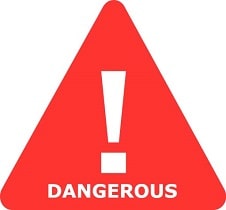Is Vinblastine Safe in Breastfeeding
Question
I am a breastfeeding mother and i want to know if it is safe to use Vinblastine? Is Vinblastine safe for nursing mother and child? Does Vinblastine extracts into breast milk? Does Vinblastine has any long term or short term side effects on infants? Can Vinblastine influence milk supply or can Vinblastine decrease milk supply in lactating mothers?
Vinblastine lactation summary

- DrLact safety Score for Vinblastine is 7 out of 8 which is considered Dangerous as per our analyses.
- A safety Score of 7 indicates that usage of Vinblastine may cause toxic or severe side effects in breastfed baby.
- Our study of different scientific research indicates that Vinblastine may cause moderate to high side effects or may affect milk supply in lactating mother.
- Our suggestion is to use safer alternate options rather than using Vinblastine .
- Usage of Vinblastine is in contradiction to breastfeeding hence if it is must to use Vinblastine and there is no better alternative available then breastfeeding shall be stopped permanently or temporarily.
- Score calculated using the DrLact safety Version 1.2 model, this score ranges from 0 to 8 and measures overall safety of drug in lactation. Scores are primarily calculated using publicly available case studies, research papers, other scientific journals and publically available data.
Answer by Dr. Ru: About Vinblastine usage in lactation
Drug is cleared from the body in 8 elimination half-lives. Resuming breastfeeding is likely safe after 10 days of of pumping-and-dump.ing
Answer by DrLact: About Vinblastine usage in lactation
Most sources consider breastfeeding to be contraindicated during maternal antineoplastic drug therapy.[1] It is probably impractical to resume breastfeeding after vinblastine therapy because of the drug's long half-life. Chemotherapy may adversely affect the normal microbiome and chemical makeup of breastmilk.[2] Women who receive chemotherapy during pregnancy are more likely to have difficulty nursing their infant.
Vinblastine Possible Effects in Breastfeeding
A woman diagnosed with Hodgkin's lymphoma during the second trimester of pregnancy received 3 rounds of chemotherapy during the third trimester of pregnancy and resumed chemotherapy 4 weeks postpartum. Milk samples were collected 15 to 30 minutes before and after chemotherapy for 16 weeks after restarting. The regimen consisted of doxorubicin 40 mg, bleomycin 16 units, vinblastine 9.6 mg and dacarbazine 600 mg, all given over a 2-hour period every 2 weeks. The microbial population and metabolic profile of her milk were compared to those of 8 healthy women who were not receiving chemotherapy. The breastmilk microbial population in the patient was markedly different from that of the healthy women, with increases in Acinetobacter sp., Xanthomonadacae and Stenotrophomonas sp. and decreases in Bifidobacterium sp. and Eubacterium sp. Marked differences were also found among numerous chemical components in the breastmilk of the treated woman, most notably DHA and inositol were decreased.[2] A telephone follow-up study was conducted on 74 women who received cancer chemotherapy at one center during the second or third trimester of pregnancy to determine if they were successful at breastfeeding postpartum. Only 34% of the women were able to exclusively breastfeed their infants, and 66% of the women reported experiencing breastfeeding difficulties. This was in comparison to a 91% breastfeeding success rate in 22 other mothers diagnosed during pregnancy, but not treated with chemotherapy. Other statistically significant correlations included: 1. mothers with breastfeeding difficulties had an average of 5.5 cycles of chemotherapy compared with 3.8 cycles among mothers who had no difficulties; and 2. mothers with breastfeeding difficulties received their first cycle of chemotherapy on average 3.4 weeks earlier in pregnancy. Of the 6 women who received a vincristine-containing regimen, 5 had breastfeeding difficulties.[3]
Alternate Drugs
Trastuzumab(Unsafe)
Dacarbazine(Dangerous)
Imatinib(Unsafe)
Thioguanine(Dangerous)
Azelaic Acid(Safe)
Erlotinib(Unsafe)
Cladribine(Dangerous)
Vincristine(Dangerous)
Dasatinib(Unsafe)
Tamoxifen(Dangerous)
Letrozole(Dangerous)
Nilotinib(Unsafe)
Exemestane(Dangerous)
Ipilimumab(Unsafe)
Mitoxantrone(Dangerous)
Cetuximab(Unsafe)
Mercaptopurine(Safe)
Carboplatin(Dangerous)
Dactinomycin(Dangerous)
Paclitaxel(Dangerous)
Hydroxyurea(Low Risk)
Fluorouracil(Dangerous)
Etoposide(Dangerous)
Alemtuzumab(Low Risk)
Nivolumab(Unsafe)
Doxorubicin(Dangerous)
Rituximab(Low Risk)
Vinblastine(Dangerous)
Cyclophosphamide(Dangerous)
Bevacizumab(Low Risk)
Gemcitabine(Dangerous)
Bleomycin(Dangerous)
Docetaxel(Dangerous)
Cisplatin(Unsafe)
Pazopanib(Unsafe)
Vinorelbine(Dangerous)
Busulfan(Dangerous)
